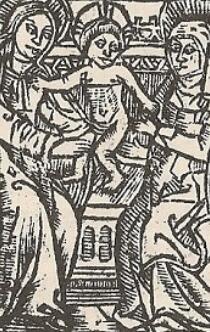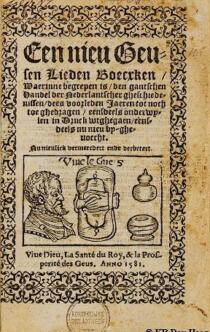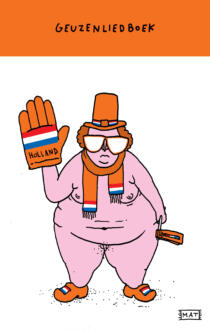In each text and with each reading, there is something new to discover about the morals and habits of the readers of sixteenth-century Antwerp. Trade and the economy were flourishing back then and the city was a melting pot of people from all walks of life, many different countries and with disparate convictions.
Until then, courtly romances were all the rage. These works mainly circulated in court circles and focused on knights and ladies, royal ambitions, glorious battles and miraculous adventures. The Antwerp Songbook, on the other hand, sketched a picture of everyday concerns. The songs set out to be a source of entertainment for people who like to sing. It was a sort of singing therapy avant la lettre: singing relieves a sad heart and has long been known to be an effective remedy for melancholy.
The three universal themes of love, religion and politics are celebrated here in all their many facets. The protagonists in the songs are mostly recognisable characters: young people in love, mothers and daughters, gossips, greybeards and drunks. And yes, there are also knights, counts, dukes, horsemen and even stereotypical bawdy monks and millers. They are in love, jealous, adulterous, happy, sad, sex-crazed and unhappily pregnant. They feel deceived, vengeful and sometimes even murderous. This is just a little taste of the many petty human behaviours depicted that make the songbook feel so familiar.
The Antwerp Songbook was published in a very plain and small format. It has no musical notation or illustrations, which made it easy for people to carry it with them. Perhaps it is because of this fact that only one complete copy of the songbook has survived: the third edition, from 1544. In June 1546, the Antwerp Songbook was placed on the index of forbidden books, which makes it even more unique and interesting.
For this third edition, the printer Jan Roulans included old and new material to create a sort of anthology of songs that had come his way through various channels. Some of the songs can only be found in the Antwerp Songbook but for others, this book provides the best or earliest (and therefore most interesting) version.
Just as a pearl does not immediately reveal its shine and beauty, the Antwerp Songbook demands a certain effort from the modern reader if they are to discover its qualities. The texts contain, for example, many clichés and repetitions – typical for the oral culture from which they originate – and do require some explanation today due to the amount of symbolism embedded in the text. Some of the songs are full of double entendres and may have an underlying, erotic meaning.
The songbook made its appearance at an exciting turning point in history, between the late Middle Ages and the early Renaissance. The social microcosm that this book presents may be typically sixteenth century but the underlying themes are deeply human and as such strike a chord with the modern reader.






